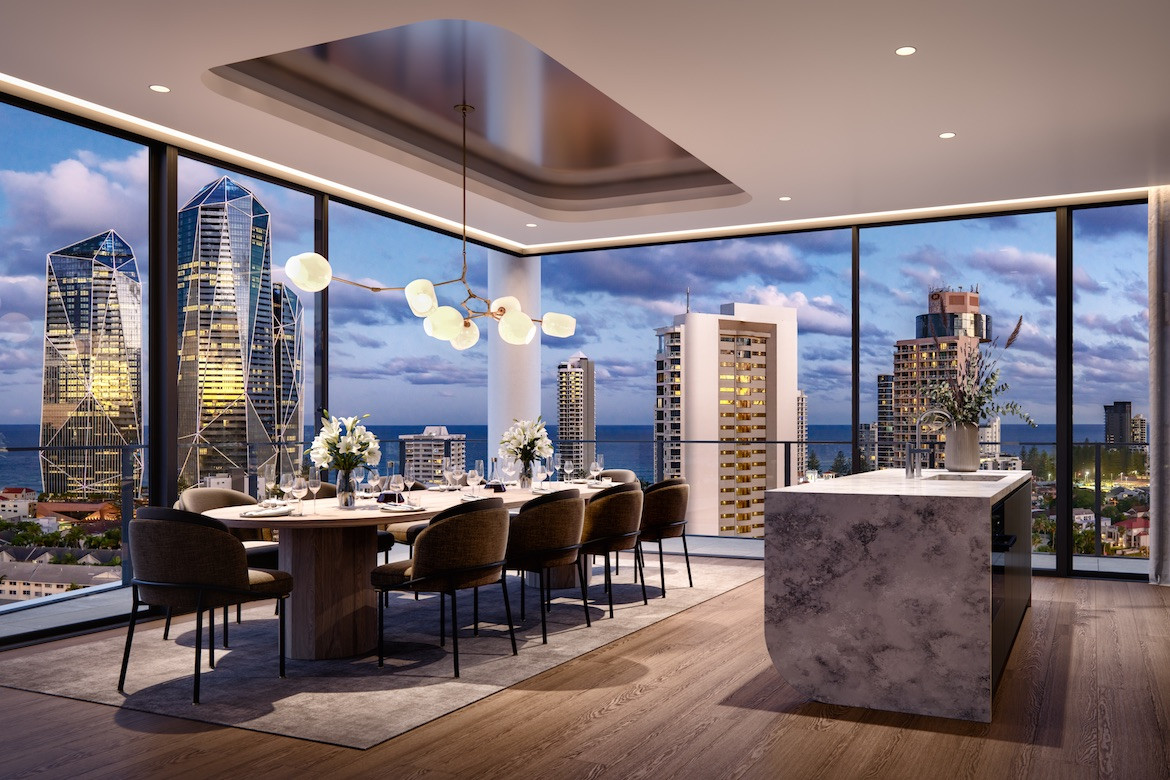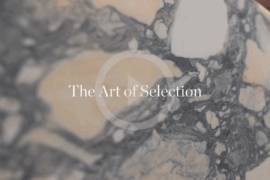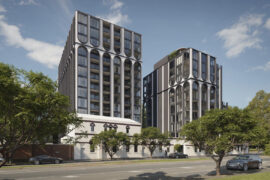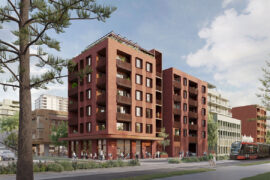Plus Architecture’s Danny Juric questions the validity of ‘build-to-rent’ as an affordable housing solution, looking instead towards possibilities such as micro apartments.

September 9th, 2021
When it comes to affordable housing, Brisbane director of Plus Architecture Danny Juric questions the validity of ‘build-to-rent’ as a solution. He thinks creative architectural measures, such as micro apartments, could make owning property more achievable for everyone – without relying on big corporations that take ownership away from individuals.
In his ideal future, Juric “would rather focus on facilitating people to acquire assets and own equity, rather than having affordable rental stock”.
Unfortunately for Juric, he sees the legitimate future of housing affordability in Australia as far more bleak than that.
“The future right now is actually backed by government incentives and councils and big corporations,” says Juric. He says build-to-rent projects are following in the footsteps of popular American and European housing models.
“It’s about large corporations owning large assets, and then a much larger portion of our population being in rent,” says Juric.
Proponents of build-to-rent housing argue that more rental properties may alleviate housing affordability stress for a variety of demographics, including retirees and students, while the potential lease security is also another big draw card for tenants.

A sample floor plan from Plus Architecture showing a unit within a unit
But Juric believes architects can provide better creative solutions to Australia’s housing affordability crisis. One option, he says, is micro apartments. And no, not simply ‘tiny apartments’, rather, an apartment that can be flexibly divided or opened up to incorporate another separate apartment inside. This concept allows homeowners to divide one section of their apartment to be used either as a home office, separating work and living environments, as a detached rental or Airbnb, or simply as a second area for visitors or adult children coming to stay.
While this method isn’t exactly reducing the cost of homes at the outset, Juric says it will add more rental properties to the market, while helping owners pay off their mortgages. The apartments have the flexibility to be returned to a larger space once the need for the micro apartment dissipates.“By just supply and demand, you’re actually able to keep rental affordability down, whilst you’re increasing the revenue generation by the owners so they can afford to buy property,” says Juric.

A sample floor plan from Plus Architecture showing a split home office within an apartment
“It’s about this facilitation of ownership rather than saying, ‘Forget it, you’ll never own it, what we’ll do is we’ll give you a rental discount, and you can stay in this build-to-rent building’,” says Juric.
To address Australians’ reluctance to live in apartments, encouraged perhaps by the drive to own a house as part of ‘the Australian dream’, Plus Architecture builds apartments that are “lifestyle driven”. In some cases, this means providing recreational amenity to increase the social aspect of the building.

An example at the extreme end of the scale is its project, The Society, which needed to make up for its small apartment sizes. To achieve this, on top of the standard pool, spa, sauna and gym offering, there is also a business lounge, laundromat and large dining room for hosting larger groups. The potential for interaction with other humans in these buildings, says Juric, is what makes this kind of apartment living exciting.

A communal area in The Society by Plus Architecture
While Plus Architecture’s housing model doesn’t necessarily save buyers money at the outset, these flexible micro apartments may provide a drawcard for those looking for an additional source of income to help pay off the mortgage. It’s creative solutions such as these, says Juric, that will contribute to making home ownership more accessible for more Australians.
Plus Architecture
plusarchitecture.com.au
INDESIGN is on instagram
Follow @indesignlive
A searchable and comprehensive guide for specifying leading products and their suppliers
Keep up to date with the latest and greatest from our industry BFF's!

For a closer look behind the creative process, watch this video interview with Sebastian Nash, where he explores the making of King Living’s textile range – from fibre choices to design intent.

CDK Stone’s Natasha Stengos takes us through its Alexandria Selection Centre, where stone choice becomes a sensory experience – from curated spaces, crafted details and a colour-organised selection floor.

At Melbourne Design Week, Plus Studio brought together planners, designers and local government voices to unpack the realities of urban densification.

The Minns Labor Government has unveiled nine new architect-designed mid-rise apartment patterns, expanding the NSW Housing Pattern Book and accelerating the delivery of accessible, high-quality housing across the state.
The internet never sleeps! Here's the stuff you might have missed

The Parliamentary Friends reconvened at Parliament House, uniting political and professional leaders to champion architecture and design.

Recognised as winners at the INDE.Awards 2025, Enter Projects Asia in collaboration with SOM have received The Influencer award. Their work on Terminal 2 Kempegowda International Airport Interiors redefines the aesthetics of airport design through a monumental expression of biophilia, sustainability and craftsmanship.